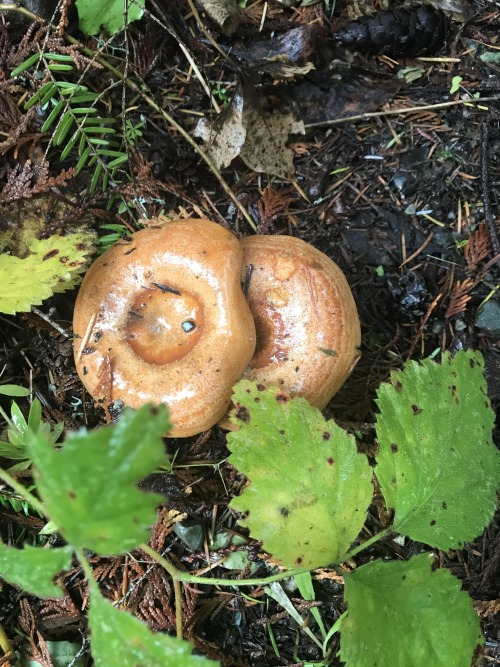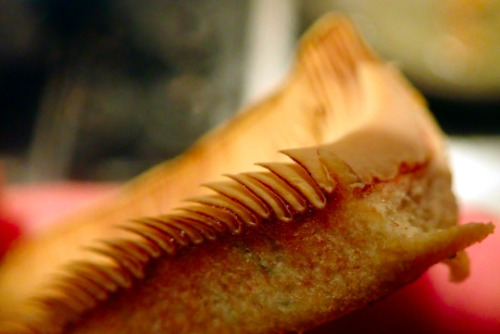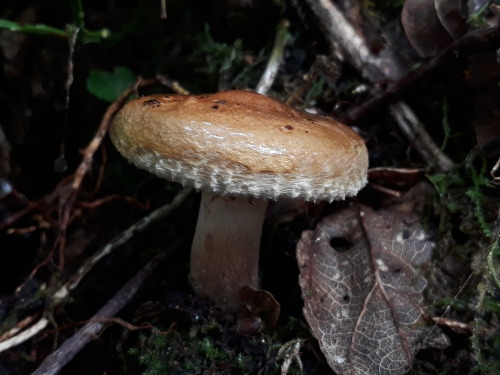#milkcap
26/10/2020 When cut or bruised, this milkcap mushroom oozes a Not Ominous At All Thick Dark Red Liquid. We cooked them in butter. The butter turned Red. Butter for the Butter God.
This species is ectomycorrhyzal with fir trees: they have a symbiotic relationship. The fungus makes a network of strands across a large volume of soil, including growing right into the tree roots. The tree uses sunlight to make sugars, and shares them with the fungus. In exchange, the fungus shares water and nutrients its network has extracted from the soil. Sometimes it connects multiple trees, and they can share resources through the fungal network.
It’s one of the most convenient ectomycorrhyzal fungi to study scientifically. You don’t have to gene sequence anything; it’s always easy to tell where this fungus is. If a tree is symbiotic with this fungus, the roots will seep Not Ominous At All Thick Dark Red Liquid when cut. The forest bleeds, down there in the dark silent earth.
Not Ominous At All.
Post link
London, UK, September 2021
Woolly milkcap (Lactarius torminosus)
These gorgeous little milkcaps are easily recognised by their fluffy bears and pink colouring - though the latter hasn’t shown up well in the photo here. Like all their cousins in the Lactariusgenus, they will produce a white latex ‘milk’ when their gills are damaged. As it’s relatively uncommon in Britain, I didn’t want to disturb this single one to photograph the gills, though.
They’re considered edible if carefully prepared, but if eaten incorrectly cooked they can cause stomach upsets.
Post link



